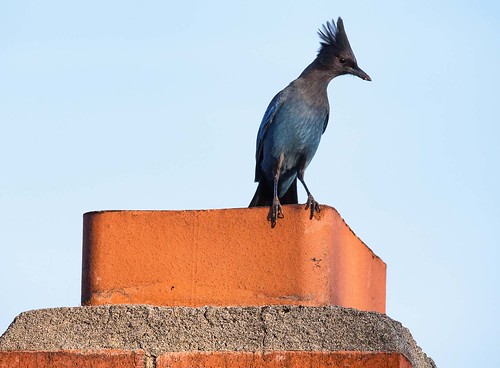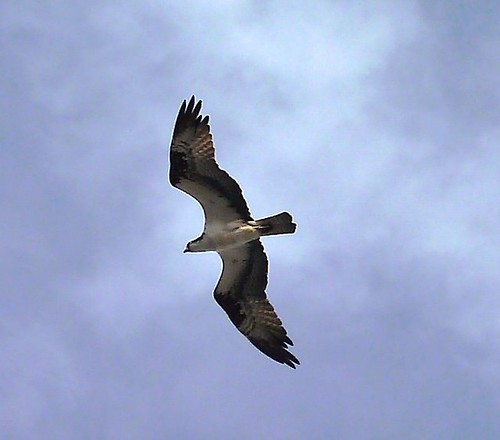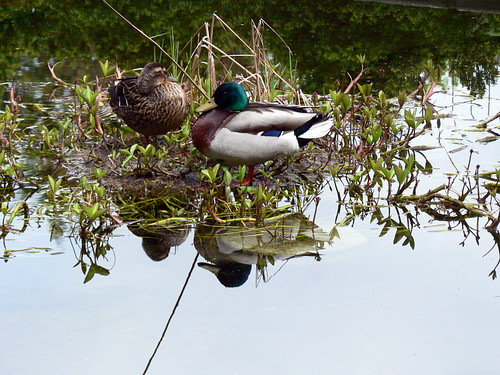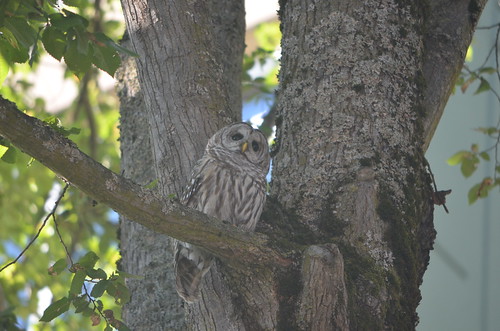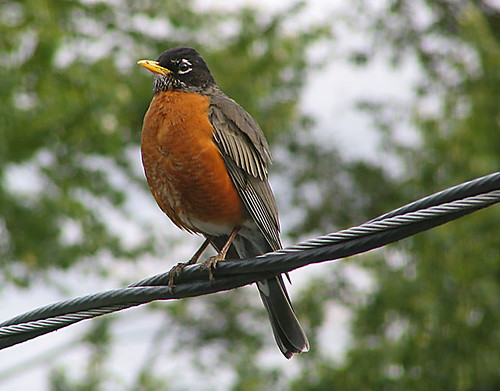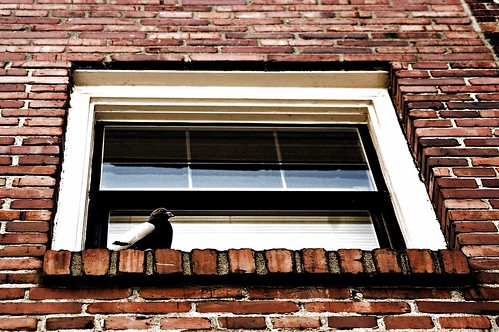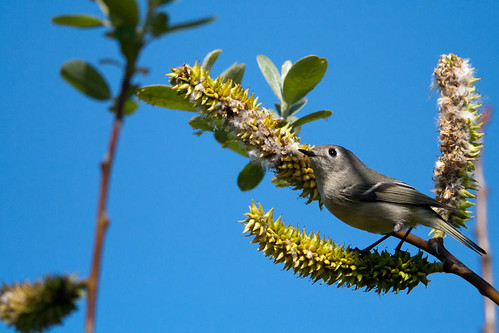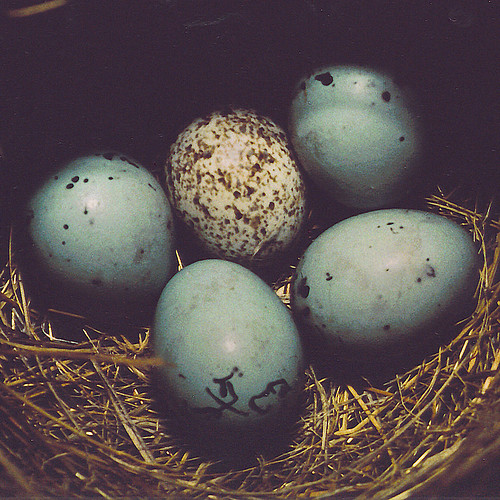Note to Readers: This will be my last CHS Aviary post. I’m having a baby and moving on to other pursuits after a few months of maternity leave. I’ve enjoyed writing about birds and reading your comments over the last couple of years, so thanks for reading! –Melissa Koosmann
Human beings aren’t the only creatures on Capitol Hill that sometimes squabble over public spaces. Check out the trees and yards in your neighborhood, and you’ll see many species of birds engaged in squabbles over territory. One species that displays particularly interesting social and territorial relationships is the Steller’s jay.
The Steller’s jay is one of the most distinctive birds on the Hill. It has a tall black crest on its head and a blue body. If you look closely, you may see two bright blue vertical stripes over the eyes.
Like its relative the American crow, the Steller’s jay is an intelligent, opportunistic omnivore. It eats insects, seeds, fruit, eggs, and small animals—including little birds like dark-eyed juncos or black-capped chickadees if it can catch them. Here in our urban environment, the Steller’s jay also supplements its diet with human garbage.
Male and female Steller’s jays mate for life, and mated pairs establish dominance over a small area surrounding their nest. They are not completely territorial; other Steller’s jays may enter their space. However, Steller’s jays display dominance behaviors toward any other jays that enter their home area. But the farther they travel from their nest space, the more likely they are to show deference to other jays. This causes a complex, shifting pattern of social relationships based more on geography than on age or sex characteristics.
Steller’s jays indicate their dominance with harsh, raucous calls and various body movements that include wing-spreading and tail-flicking. A submissive bird—in other words, a bird outside its home environment—may crouch low, press its tail to the ground, and let out a “wah” call.
The Steller’s jay is common in parks and gardens around the Hill. If you don’t have a yard, you can find these birds in nearly any green space that has lawns and conifers.
Interested in learning more?
- Check out the Steller’s jay’s page at the Cornell Lab of Ornithology.
- Learn more about the jay’s distribution in the state of Washington here.
- This video shows some of the Steller’s jay’s behaviors.
Have a Capitol Hill topic you’re fascinated by that you think would make a great regular column for CHS? Let us know chs @capitolhillseattle.com.



